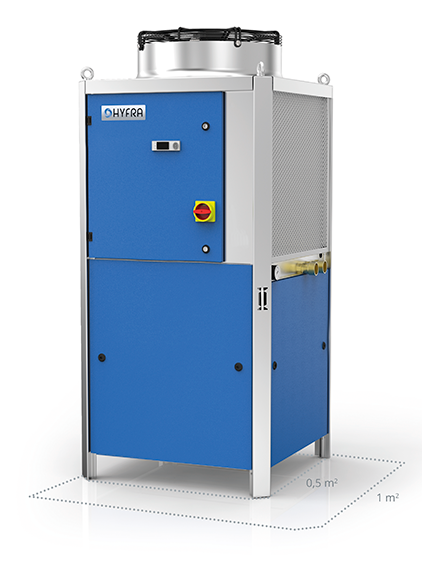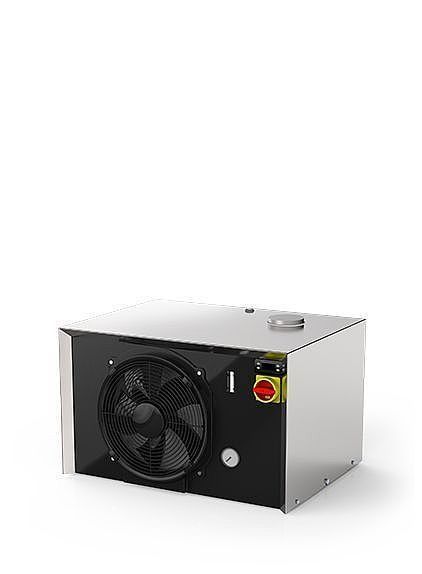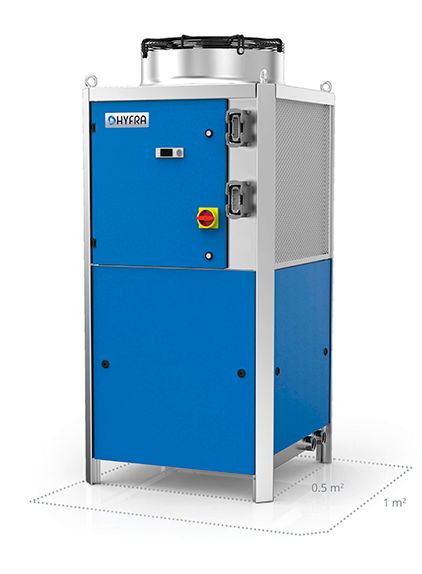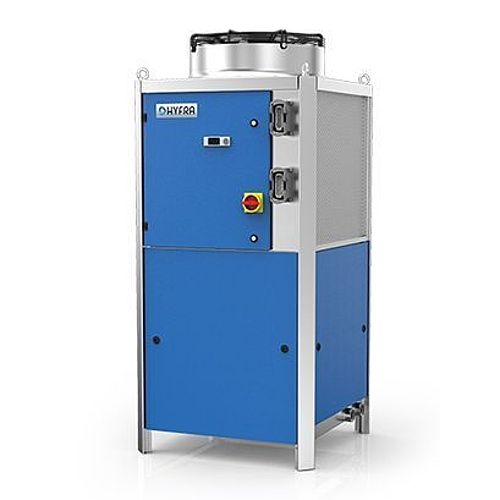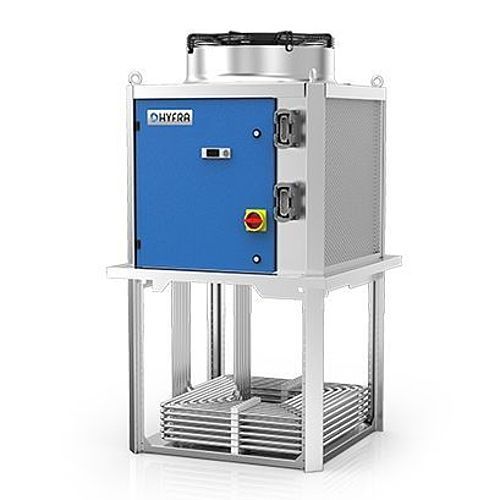For quick, efficient production processes, industrial production uses many different machines. They range from simple conveyor belts and fully automatic CNC machines to state-of-the-art cobots that literally work hand in hand with humans. Maximum precision is key when manufacturing machines that must reliably deliver constant quality later.
How are industrial chillers used for machine cooling?
When manufacturing machine components, high-precision, powerful machine tools are used. Narrow tolerances in the micrometer range (1 µm = 1 thousandth of a millimeter) require that all moving parts of machine tools work within a narrow, constant temperature range. This is why they are often actively cooled with a liquid (water, oil or emulsion, for example). Without controlled cooling, the thermodynamic properties of the bearing and axles could lead to machine tool standstill. If heat input causes an axle to expand to a greater extent than its bearing, it can jam. Or vice versa: if the bearing expands more than the axle it holds, there is more tolerance. This results in less precise concentricity, which has an adverse effect on the workpiece’s dimensional tolerance and increases the number of rejects.
Constant workpiece temperature during processing is also a key factor. Active, controlled cooling with cutting fluid counteracts the heat input in this situation, avoiding incorrect workpiece properties and changes in dimensional tolerance. Heat input can lead to exceeding the permissible tolerance, also increasing the number of rejects because the workpiece’s quality requirements are no longer satisfied.
Which advantages do chillers offer in machine tool production?
Actively cooling workpieces not only supports precision, but also extends workpiece service life. In the manufacturing process, temperature changes are consciously managed in order to influence the metals’ properties, for example. The cutting tips of drill bits are tempered to allow them to drill clean holes for a long time, while their shafts are relatively soft so they do not snap off easily. The hardness or flexibility of metal is adjusted by systematically warming and cooling it. Undesirable temperature fluctuations can destroy these properties.
Correct, constant temperatures keep the cutting edge of drill bits and milling heads sharp longer and the tool can be used to produce several workpieces, reducing the manufacturing costs per piece.
What are some requirements in modern machine cooling?
Alongside the requirement of increasingly high precision, mechanical engineers are challenged to provide constantly higher output in constantly compacter space. This has led to replacing passive air cooling with active fluid cooling – above all, in drive motors. The same development took place in automotive engineering decades ago: the old air-cooled motors have become today’s much more powerful water-cooled engines of the same size.
In summary: High precision requires the precise temperature control of workpieces, tools and machine tools. More power leads to shorter processing periods due to maximum cutting speeds, but this generates higher thermal loads. For constant or more compact installation spaces more effective fluid cooling is required instead of simple air cooling. HYFRA has the ideal chiller for fluid cooling with water, oil or emulsion; or will develop a customized solution.
Other customers were interested in our HYFRA injection molding chillers and our HYFRA spindel chillers.
One example from the automotive industry is motor block machining. To enable the completed motor to operate at full power and satisfy the most rigorous emission standards later, all components must be manufactured with high precision. Not only the tool is cooled to comply with rigorous tolerances (a milling machine in the figure). Instead, the milling machine spindle must also be cooled to ensure optimal concentricity. During the entire process, the workpiece must not change its size or form as a result of temperature fluctuation. This is why both the workpiece and the workbench on which the motor block is installed during processing are cooled. To cool them, cutting fluid (not shown in figure) flows over workpieces and workbenches during processing. Inside a closed circuit, it is purified and cooled again. Spindles are cooled to the optimal temperature separately in machine tools.
Machine cooling systems must constantly become smaller, more flexible and deliver higher performance to harmonize with machine designs, which face similar challenges. At the same time, the requirements for conserving economic and environmental resources are becoming more complex. The specialists at HYFRA have developed future-proof solutions to meet these requirements, one of which is microchannel technology. Devices with it use up to 70% less refrigerant. HYFRA also engineers compact forms with reduced installation spaces or heights.
For all process cooling challenges and tasks, HYFRA is the right point of contact. Alongside proven standard solutions, HYFRA develops customized solutions hand in hand with customers – for example, speed-controlled cooling systems for one of the world’s leading manufacturers of multi-functional turning-drilling-milling stations. These precision machines are used to manufacture highly complex components in the aviation, energy and automotive industries.
